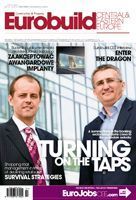Even in the dark days of the credit crunch there are some projects that are not suffering from any lack of financing. Can public buildings be the design studio’s answer to the crisis? Well, maybe not – but these buildings can still do a great deal of good for CEE citiesMladen Petrov Sofia can hardly be regarded as the most beautiful European city. In fact, according to some critics, Sofia is not even a beautiful city at all. It is very “specific”, they say, cautiously implying that the Bulgarian capital still has a long way to go. In the first place, visitors are advised to divert their gazes away from the concrete Soviet-style blocks in the vicinity of the airport, as they might give a bad first impression. Nevertheless, if you are heading downtown, you should ask your taxi driver to show you the ‘4th km area’ of the city, along the Tzarigradsko Shausse boulevard.Today the area, just a few kilometres from the busy city centre, looks neglected, but






























































